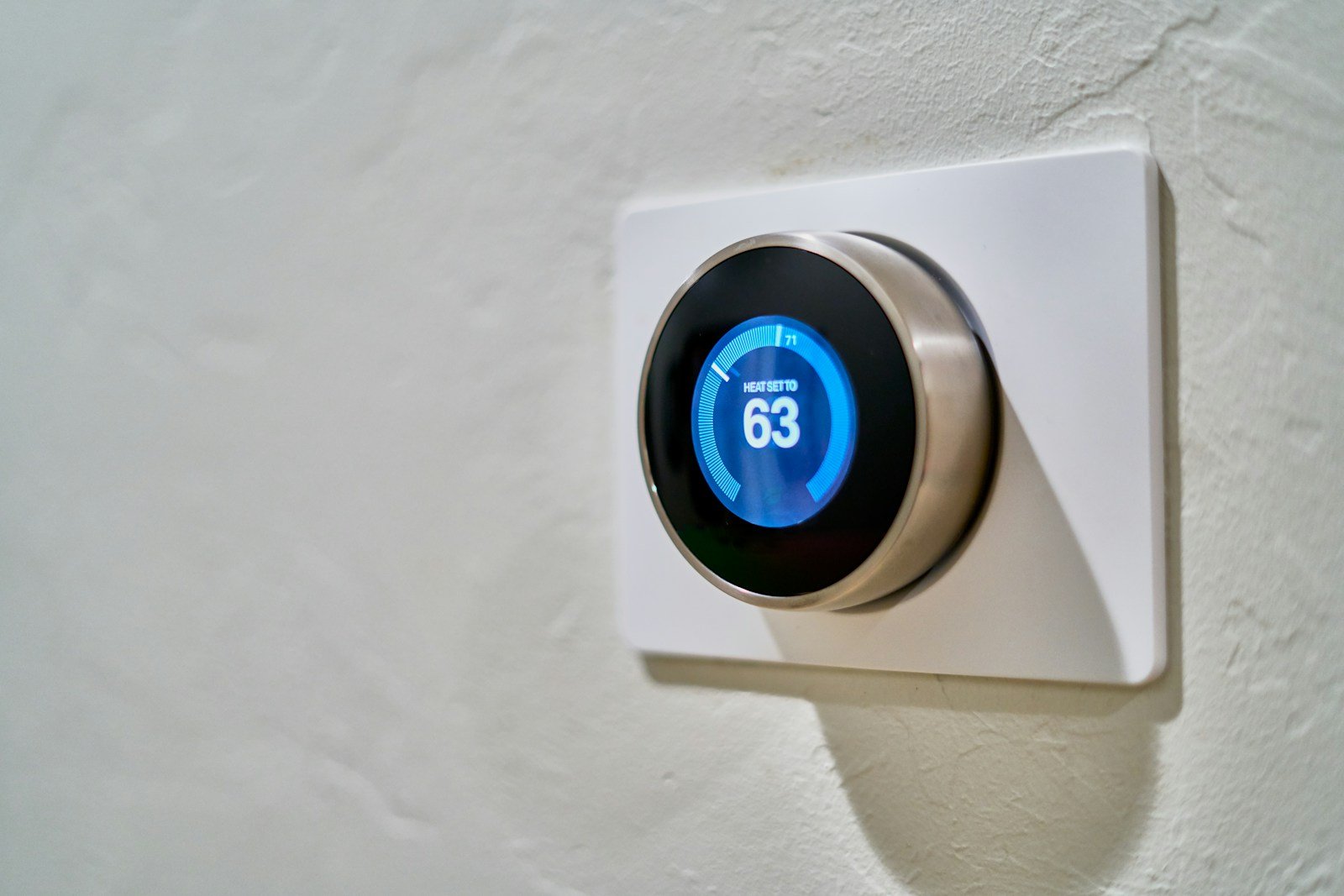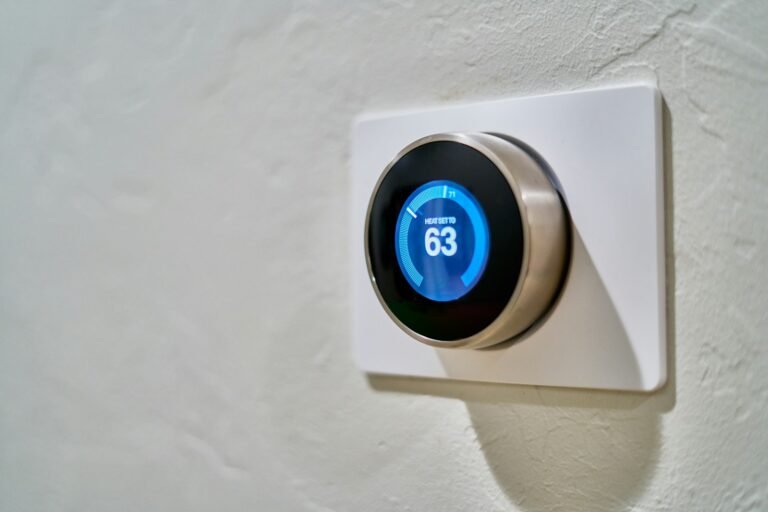Physical Address
304 North Cardinal St.
Dorchester Center, MA 02124
Physical Address
304 North Cardinal St.
Dorchester Center, MA 02124


Smart home technology has revolutionized the way we interact with our living spaces, offering innovative solutions for energy efficiency. With environmental concerns growing, more people are looking for ways to reduce energy consumption, cut down on utility costs, and embrace a greener lifestyle. Smart devices provide an excellent way to achieve all these goals while also adding convenience and value to your home.
Creating an energy-efficient home isn’t just about saving money. It’s a proactive step toward reducing your carbon footprint and preserving the planet for future generations. Whether you’re new to eco-friendly living or a seasoned advocate, integrating smart home devices can make sustainability easier and more effective. Here, we explore the top five smart home devices that can transform your home into a beacon of energy efficiency while fitting seamlessly into your lifestyle.
The average household uses energy inefficiently. Lights are left on, appliances run unnecessarily, and heating or cooling systems often operate when no one is home. According to the U.S. Energy Information Administration, residential energy consumption accounts for 20% of global energy use, with a significant portion wasted due to inefficiency. Addressing these inefficiencies with smart technology can drastically lower your energy usage while reducing your impact on the environment.
Many homeowners are unaware of how much energy their household consumes unnecessarily. A smart home, equipped with energy-saving devices, can help you monitor and control consumption. Not only does this save money, but it also promotes a more conscious approach to resource use.
Heating and cooling account for nearly half of the energy consumption in a typical household. Smart thermostats are one of the most impactful devices for reducing energy usage in this area. By learning your preferences and automatically adjusting temperatures based on occupancy, smart thermostats like the Google Nest Thermostat or the Ecobee SmartThermostat can optimize energy use without sacrificing comfort.
These devices also provide real-time feedback on energy consumption, empowering homeowners to make informed decisions. For example, by adjusting the temperature slightly during peak energy hours or turning down the heat when no one is home, you can save up to 15% annually on heating and cooling costs. Many users report noticeable reductions in their energy bills within just a few months of installation.
One user shared that after installing a smart thermostat, they saved $200 in energy costs in the first year alone. This not only made a financial difference but also contributed to their household’s sustainability goals.
Lighting is another major area where energy efficiency can be improved. Traditional incandescent bulbs consume significantly more energy compared to modern LED alternatives. Smart lighting systems, such as Philips Hue or LIFX, take this a step further by allowing you to control and customize your lighting remotely.
Smart bulbs can be programmed to turn off when a room is unoccupied or dimmed to conserve energy. They also offer features like scheduling and color adjustment, which add convenience while promoting sustainability. LEDs, which are the backbone of most smart lighting systems, last up to 25 times longer than incandescent bulbs, reducing waste over time.
For households with children, smart lighting can even serve as a teaching tool. For example, setting timers for lights to turn off at bedtime not only encourages better habits but also saves energy. One family reduced their electricity usage by 10% within a year simply by transitioning to smart lighting and setting timers for frequently used areas.
Phantom energy, or the energy used by devices in standby mode, is an often-overlooked source of waste. This “vampire energy” can account for up to 10% of a household’s electricity usage. Smart power strips combat this issue by cutting power to devices when they are not in use.
These power strips are especially effective for entertainment systems, computers, and kitchen appliances. Instead of leaving devices like game consoles or microwaves plugged in and draining energy, smart power strips automatically shut them off when they’re not actively being used. Over time, this small adjustment can lead to significant savings.
An example from a small business owner highlights the impact: after installing smart power strips in their office, they noticed a $50 reduction in their monthly electricity bill. For home use, the savings may be less dramatic but still meaningful, especially for eco-conscious individuals looking to eliminate unnecessary energy waste.
Leaky faucets or pipes might seem like minor inconveniences, but they waste both water and energy, particularly if the water is heated. Smart water leak detectors, such as those offered by Flo by Moen or Honeywell, alert homeowners to leaks immediately, allowing them to address the issue before it escalates.
By identifying leaks early, these devices prevent water wastage and reduce the energy required to heat additional water. This is particularly valuable for homes with large water heaters, which are often significant energy consumers. Installing a smart leak detector not only saves resources but also avoids costly water damage repairs.
One homeowner shared that after installing a smart leak detector, they identified and fixed a hidden pipe issue that had been wasting hundreds of gallons of water per month. This not only lowered their water bill but also contributed to their broader goal of creating an energy-efficient home.
For those not ready to overhaul their entire home, smart plugs offer an accessible entry point into energy-saving technology. These devices transform regular appliances into smart ones, allowing you to monitor and control their energy use through an app.
Smart plugs are particularly useful for high-energy appliances like space heaters, dehumidifiers, or coffee makers. They enable scheduling, so appliances only run when needed, and provide data on energy consumption to help you identify energy hogs in your home. For instance, by programming a smart plug to turn off a space heater after two hours, you can prevent unnecessary energy use without manual intervention.
A simple example comes from a user who programmed their smart plugs to switch off their home office equipment after working hours. Over a year, this adjustment saved them approximately $75 in energy costs while aligning with their commitment to sustainability.
While the five devices mentioned above are excellent starting points, there are countless other smart home technologies that can complement your journey toward an energy-efficient home. Smart refrigerators, for example, optimize cooling based on contents, while smart blinds adjust to natural light to reduce the need for artificial lighting. The key is to identify areas in your home where energy waste is most prevalent and address them with targeted solutions.
As you begin incorporating smart devices into your home, remember that small changes can add up. Even a single device, like a smart thermostat or power strip, can make a noticeable difference over time. By gradually building your energy-saving arsenal, you can create a sustainable home environment that aligns with your values.
At EcoTipsEveryday.com, we believe in the power of technology to create a more sustainable future. Smart home devices represent a simple yet effective way to reduce energy consumption, save money, and contribute to a healthier planet. Which device will you try first? Let us know in the comments, and share your tips for creating a smarter, greener home.
Meta Description: Discover the top 5 smart home devices for an energy-efficient home in 2024. Save energy, cut costs, and reduce your carbon footprint with these eco-friendly gadgets!